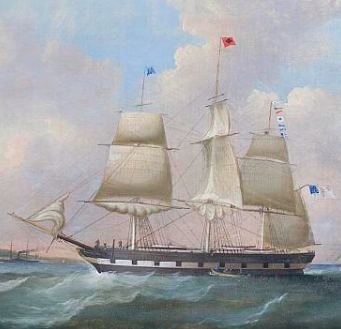
When the Crimean War disrupted normal trade patterns in Europe, American merchants found opportunity. Prior to the war, trade with England and France accounted for nearly half of Russian exports. England alone consumed 37%. On the eve of the Crimean War, the Russian Empire principally exported grain, followed by hemp and flax and tallow in exchange for consumer goods, the most important of which included salt and textiles.[1] The Crimean War quickly brought trade between the Russian Empire and Europe to a halt. The Allies blockaded Russian imperial ports in the Baltic and Black Seas, and conducted a war de guerre. Allies targeted warehouses, food stores, and merchant vessels.[2] The economic impact of war was devastating in the extreme to all sides. With the loss of traditional trading partners the belligerents turned to a neutral third party.[3]
Over the course of the war, American merchants supplied a variety of goods to combatants. Surviving records show, for example, that Samuel Colt sold arms to the Russian Empire, while John Codman helped transport troops for France. Russian agents contracted Benjamin W. Perkins to supply gunpowder to the Russian Empire. Failure of the Tsarist governor to meet the terms of the contract produced an international scandal that dragged on through the sale of Alaska in 1867.
Notes
[1] Artur Attman, “The Russian Market in World Trade, 1500-1860,” Scandinavian Economic History Review, 29.3: 177-202; here 193-202.
[2] Andrew C. Rath explores the impact of the Allies’ guerre de course in The Crimean War in Imperial Context, 1854-1856. New York: Palgrave Macmillan, 2015.
[3] V. Stepanov, “Krymskaia voina I ekonomika Rossii,” in the Crimean War, 1853-1856: ColoniaSkirmish or Rehearsal for World War? Empires, Nations and Indviduals, ed. Jerszy W. Borejsz (Warsaw: Wydawnictwo Neriton Instytut PAN, 2011).